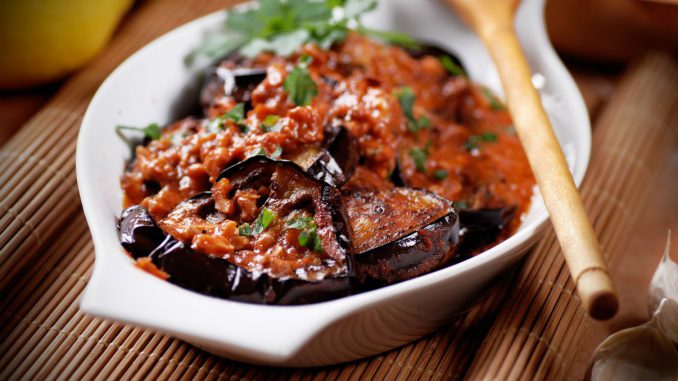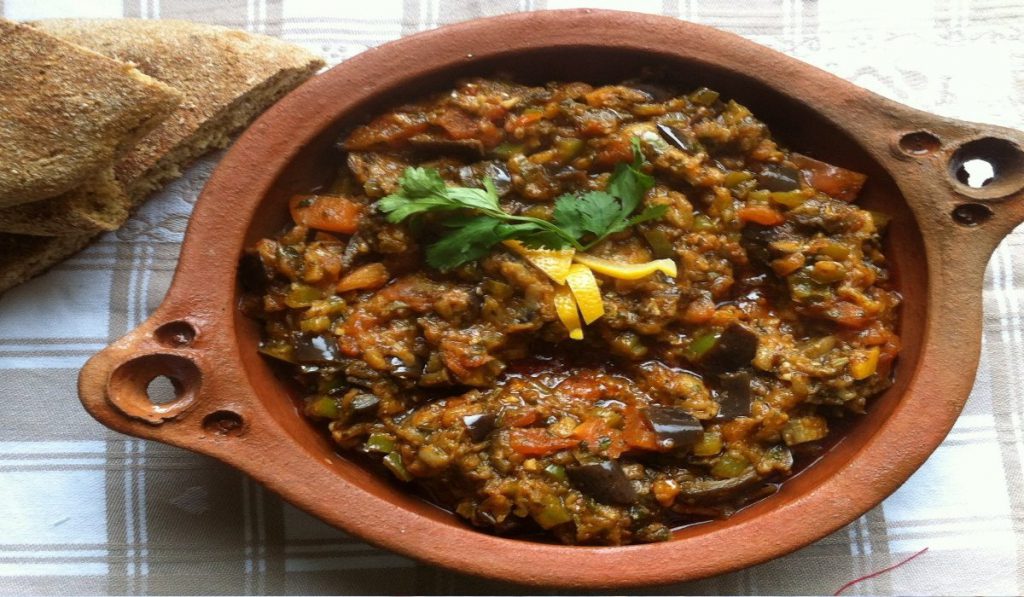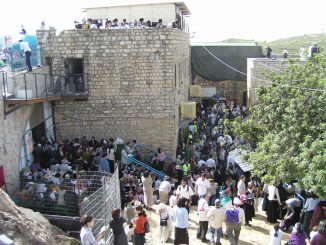
The Moroccan cuisine is considered one of the richest and most open to many culinary cultures that have made its diversity and refinement and allowed it to rank among the best cuisines in the world.
Indeed, for some specialists, Moroccan gastronomy ranks second only to French cuisine. And for good reason, the Moroccan culinary art has been enriched by Andalusian, Arab, Amazigh, and also Jewish influences that remain visible through the many popular dishes that Moroccans consume today, without necessarily knowing that they are of Jewish origin.

“Zaalouk” is one of these dishes. It is a popular recipe, based on fried or grilled aubergine and mixed with spicy or sweet peppers. “Zaalouk” is often served as a starter, especially in winter, when hot starters are preferred. It is known in some Middle Eastern countries as “Baba Ghanouj”, just as it is strongly present in the Maghreb countries where many Moroccan dishes are known, such as couscous, whose preparation and ingredients differ from one country to another.
Jews often prepare “Zaalouk” for their Shabbat celebrations where they refrain from lighting the fire on Saturdays. For example, it is customary for them to dedicate Friday evening to the preparation of simple dishes that can be eaten cold. “Zaalouk” is one of them. But Moroccans consider it as a simple starter and not as a main meal.
“Zaalouk” was mentioned in the British newspaper “Daily Telegraph” in 2011. The recipe was published in a special section of international gastronomy. An American cooking specialist, named Paula, considered it to be the best Moroccan salad, a judgment that was relayed by many media outlets.
“Zaalouk” is a nutritious, healthy and high-fibre dish. It is best boiled or steamed rather than fried.




Be the first to comment